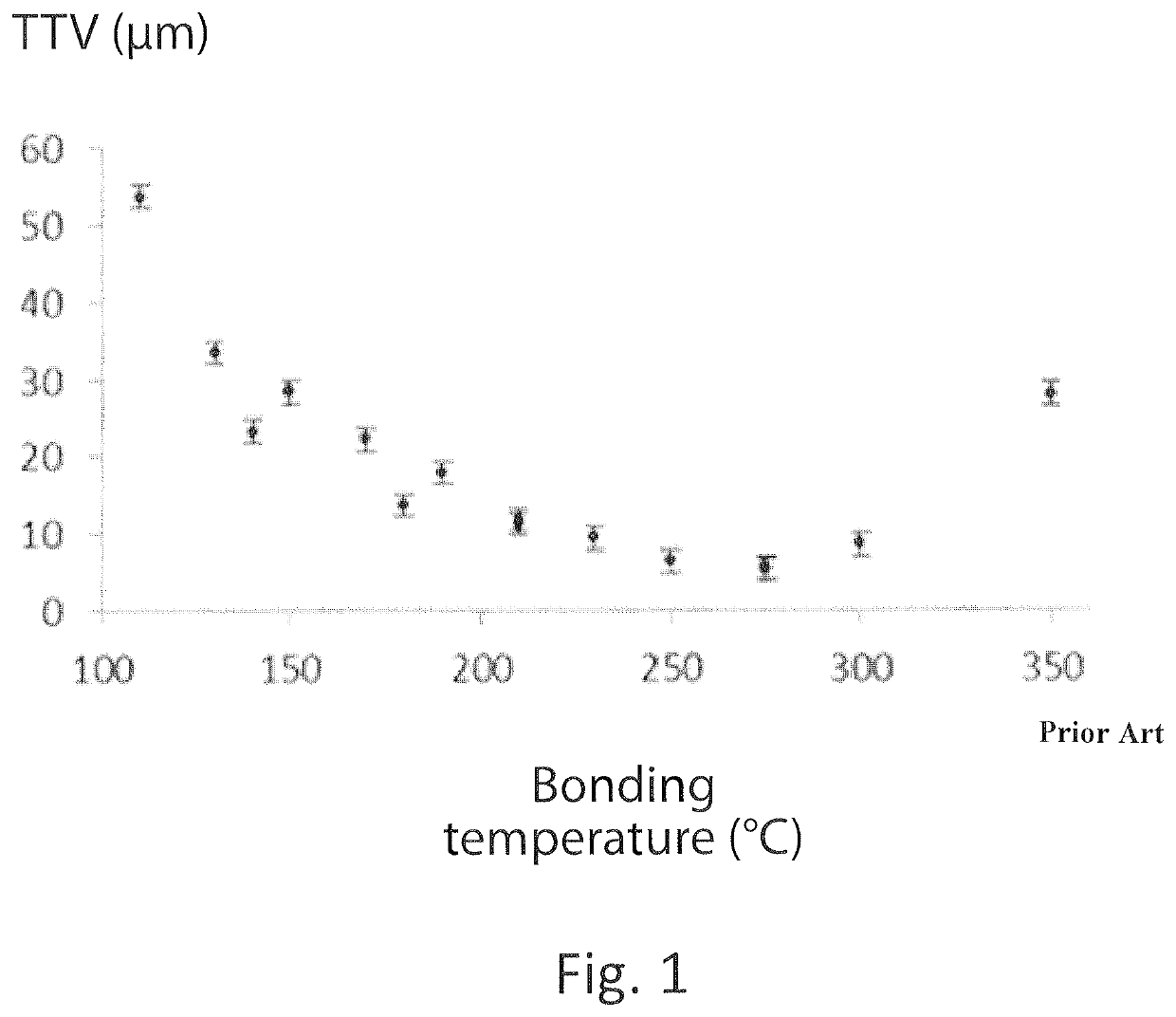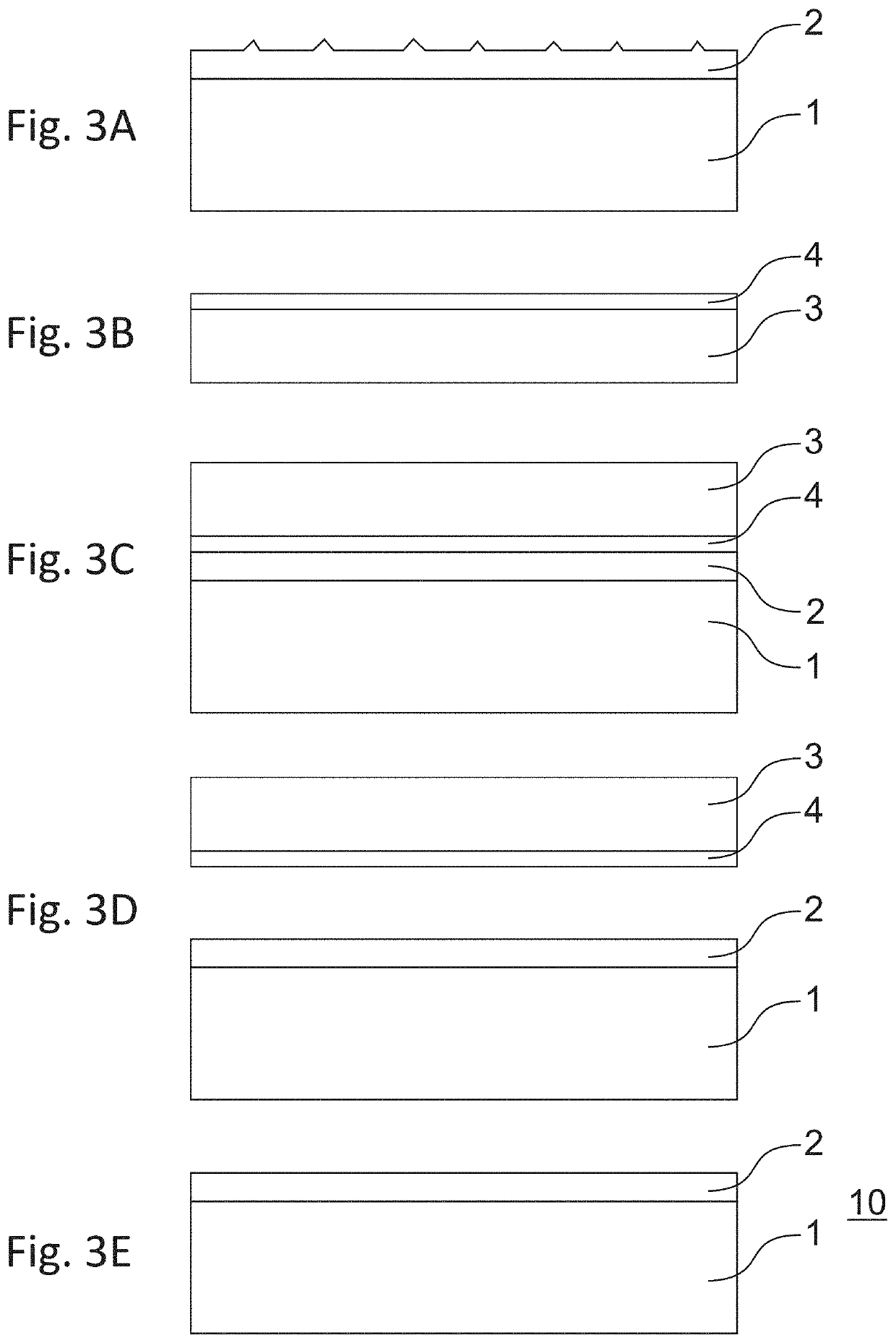Method for manufacturing a handling device and method for reversible bonding using such a device
a manufacturing method and technology of a handling device, applied in the manufacture of semiconductor/solid-state devices, solid-state devices, electric devices, etc., can solve the problems of deterioration of manufacturing steps, difficult to ensure a sufficient difference in adherence between the interfaces formed, and inability to generalize the method of reversible use, etc., to achieve the effect of facilitating the separation step
- Summary
- Abstract
- Description
- Claims
- Application Information
AI Technical Summary
Benefits of technology
Problems solved by technology
Method used
Image
Examples
Embodiment Construction
[0046]Unless stated otherwise, a same element appearing in the different figures has a single reference.
[0047]As illustrated in FIG. 2 and FIGS. 3A to 3E, a first aspect of the invention relates to a method for manufacturing a handling device 10. In one embodiment, the method according to the invention comprises:[0048]a step of deposition 101 (FIG. 2A) of a single adhesive layer 2 comprising a solvent on a first surface of a first wafer 1;[0049]a step of annealing 102 of the first wafer 1 so as to eliminate solvent from the single adhesive layer 2;[0050]a step of deposition 103 (FIG. 2B) of an antiadhesive layer 4 on a first surface of a second wafer 3 different from the first wafer 1;[0051]a step of bringing into contact 104 (FIG. 2C) the first wafer 1 and the second wafer 3, the bringing into contact taking place by the single adhesive layer 2 of the first wafer 1 and the antiadhesive layer 4 of the second wafer 3;[0052]a step of separation 105 (FIG. 2D) of the first wafer 1 and t...
PUM
| Property | Measurement | Unit |
|---|---|---|
| temperature Tc | aaaaa | aaaaa |
| temperature TCW | aaaaa | aaaaa |
| temperature Tc | aaaaa | aaaaa |
Abstract
Description
Claims
Application Information
 Login to View More
Login to View More - R&D
- Intellectual Property
- Life Sciences
- Materials
- Tech Scout
- Unparalleled Data Quality
- Higher Quality Content
- 60% Fewer Hallucinations
Browse by: Latest US Patents, China's latest patents, Technical Efficacy Thesaurus, Application Domain, Technology Topic, Popular Technical Reports.
© 2025 PatSnap. All rights reserved.Legal|Privacy policy|Modern Slavery Act Transparency Statement|Sitemap|About US| Contact US: help@patsnap.com



